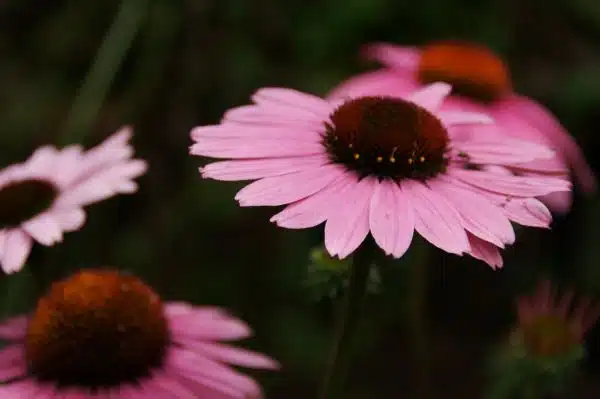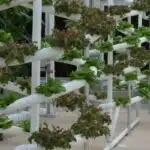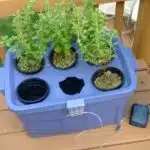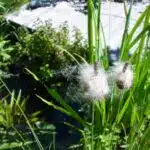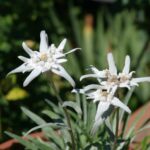Flower gardens can be a source of beauty, joy, and relaxation for many individuals. However, growing a successful flower garden requires more than just planting seeds and watering them regularly. It involves careful planning, selection of appropriate plant species, soil preparation, and maintenance practices that ensure the plants thrive in their environment.
As a horticulturalist, I have observed that most gardeners struggle with the basics of flower gardening. They often face challenges such as poor soil quality or pest infestations that hamper the growth and development of their plants. In this article, I will provide insights on how to grow a successful flower garden by outlining practical steps and best practices that have been tried and tested over time. Whether you are an experienced gardener or just starting out, this guide will equip you with the knowledge needed to create a beautiful and thriving flower garden that will bring joy to your heart and those around you.
Choosing The Right Location For Your Flower Garden
A successful flower garden depends on the right location. It is important to consider the amount of sunlight your garden will receive when selecting a spot for your flowers. Most flowers require at least 6 hours of direct sunlight daily to thrive. Without adequate sunlight, flowers may not grow properly, and their blooms may be stunted or fail to appear entirely.
However, if your yard does not receive enough sun, do not worry! There are many shade-tolerant flowers that can still flourish in areas with limited light exposure. These include impatiens, coleus, and hostas, among others. When selecting these plants, be sure to choose varieties that are specifically designed for shade tolerance so that they will grow well in the conditions provided by your garden.
Ultimately, it is crucial to choose a location that provides the right balance of sunlight and shade for your specific plants. By doing so, you can set yourself up for success when it comes to growing a beautiful flower garden. In the next section, we will explore how understanding soil types and nutrient requirements can further enhance your gardening experience.
Understanding Soil Types And Nutrient Requirements
Understanding soil types and nutrient requirements is crucial for growing a successful flower garden. Different flowers have varying needs, and understanding the soil pH levels will help you select the right plants for your garden. Soil pH refers to the acidity or alkalinity of the soil, which affects how well plants absorb nutrients from the soil. Most flowers prefer slightly acidic soils with a pH range of 6.0 to 7.0, but some plants like azaleas and rhododendrons require more acidic soils with a pH range of 4.5 to 5.5.
Organic vs. Synthetic fertilizers are two options for providing nutrients to your garden plants. Organic fertilizers are made from natural sources such as animal waste or composted materials and improve soil structure over time while promoting soil health by supporting beneficial microbes and earthworms in the soil. On the other hand, synthetic fertilizers are chemical-based substances that can provide an immediate boost of nutrients to plants but can harm beneficial microbes in the soil if used excessively.
To better understand how different fertilizers impact plant growth, refer to this table outlining their benefits and drawbacks:
| Organic Fertilizer | Synthetic Fertilizer | |
|---|---|---|
| Advantages | Promotes long-term soil health | Provides immediate nutrient boost |
| Disadvantages | Slow-release of nutrients may not meet plant needs immediately | Can harm beneficial microbes in the soil if overused |
Understanding your soil type, pH level, and fertilizer choices will help you prepare your garden for planting successfully. By selecting appropriate flowers that thrive in your specific conditions and providing them with necessary nutrients either through organic or synthetic means, you’ll ensure healthy blooms throughout the season. In our next section, we’ll discuss essential steps for preparing your flower bed before planting starts.
Preparing Your Soil For Planting
Before planting your flower garden, it is essential to prepare the soil. Testing the soil pH is a critical step in determining the suitability of your soil for growing flowers. Most flowers thrive in soil with a pH level between 6 and 7.5. You can use a soil test kit to measure the pH level of your garden’s soil accurately. If you find that your soil’s pH level is not within the recommended range, you can adjust it by adding lime to increase alkalinity or sulfur to increase acidity.
Adding organic matter to your garden soil improves its structure and fertility, making it easier for plants’ roots to grow and absorb nutrients. Organic matter also increases water retention capacity and improves drainage, which is crucial for healthy plant growth. You can add compost, aged manure, or leaf mold to your garden’s soil to improve its quality.
In summary, preparing your garden’s soil before planting plays an integral role in ensuring a thriving flower garden. By testing the soil’s pH level and adding organic matter, you will create an ideal environment for growing healthy flowers. In the next section, we will discuss selecting the right plants for your garden based on factors such as climate zone and sun exposure.
Selecting The Right Plants For Your Garden
One important consideration when selecting plants for your garden is whether to choose annual or perennial species. Annuals, such as zinnias and marigolds, complete their life cycle within one growing season and will need to be replanted each year. Perennials, on the other hand, come back year after year and can provide a more stable foundation for your garden. It’s also worth considering whether to opt for native or non-native plants: native species are well-adapted to local conditions and tend to require less maintenance but may have limited ornamental value.
Another aspect of plant selection is designing a color scheme that complements the overall aesthetic of your garden. For a more harmonious look, you might choose a monochromatic scheme using different shades of the same color. Alternatively, a complementary scheme could involve pairing colors that are opposite each other on the color wheel, such as purple and yellow or red and green. Whatever you choose, be sure to take into account the amount of sunlight your garden receives throughout the day.
By carefully selecting the right plants for your garden based on factors such as annual vs. perennial and native vs. non-native species, you’ll be able to create a beautiful outdoor space that thrives with minimal effort on your part. Additionally, choosing an appropriate color scheme can help elevate your garden’s aesthetic appeal while also creating a sense of coherence across different areas. In the next section we will discuss how choosing the best time to plant can further enhance the success of your flower garden.
Choosing The Best Time To Plant
When it comes to flower gardening, choosing the best time to plant is crucial for a successful garden. Best practices suggest that it is best to plant flowers either in the early spring or late fall when temperatures are cooler and more consistent. This allows roots to establish before the heat of summer or cold of winter sets in.
Common mistakes include planting too early or too late in the season. Planting too early can result in frost damage, while planting too late may not give the plants enough time to establish roots before winter. Additionally, planting during hot summer months can cause stress on newly planted flowers, making it difficult for them to grow properly.
Now that you have determined the best time to plant your flowers, it’s important to also consider proper planting and transplanting techniques. By following these steps correctly, you can ensure your flowers will thrive and grow beautifully in your garden.
Planting And Transplanting Techniques
- To ensure successful growth, it is important to correctly prepare the soil prior to planting or transplanting.
- Seeds should be planted at the correct depth and spacing according to the specific species for optimal germination.
- Seedlings should be handled delicately and transplanted at the same depth as their original container when moving to a larger space.
- Bulbs should be planted in well-drained soil, at a depth and spacing that is recommended for the specific species, and should be watered well after planting.
Preparing Soil
When it comes to growing a successful flower garden, preparing the soil is crucial. The first step in this process is to perform a soil test to determine the pH level and nutrient content of the soil. This information will help you determine what amendments are necessary for optimal plant growth. Composting benefits can also be utilized during this stage by adding organic matter to the soil, which improves its structure and drainage.
Once you have assessed your soil’s needs, it’s time to start amending it. This can include adding fertilizers, lime, or other nutrients based on your test results. It’s important to follow instructions carefully when adding these amendments as too much of one nutrient can harm plants. Additionally, incorporating compost into the soil provides an excellent source of slow-release nutrients and beneficial microorganisms.
In conclusion, preparing the soil is a critical step in growing a thriving flower garden. By performing a soil test and utilizing composting benefits, you can ensure that your plants have the necessary nutrients and structure for optimal growth. Remember to follow instructions carefully when adding any amendments and incorporate compost regularly for ongoing plant health.
Planting Seeds
Planting and transplanting techniques are essential in maintaining a healthy and flourishing flower garden. One of the crucial aspects of these techniques is seed selection, which can significantly impact the growth and development of your plants. When selecting seeds, it’s vital to consider factors such as your climate zone, soil type, and the amount of sunlight your garden receives. Additionally, choosing high-quality seeds from reputable sources can increase your chances of success.
Once you have selected your seeds, it’s time to start planting them. Germination is the process in which a seed grows into a plant, and it’s critical to provide optimal conditions for this to occur. Some germination tips include ensuring that your soil is moist but not waterlogged, providing adequate light and warmth, and avoiding overwatering or overcrowding your seeds. It’s also essential to follow specific instructions for each type of seed as different varieties may require different planting depths or spacing.
After your seeds have germinated, it’s time to transplant them into their permanent location in the garden. This process involves carefully removing the plant from its container or starting tray and placing it into a prepared hole in the soil. It’s important to handle the plant gently during this process as any damage can harm its growth potential. Additionally, providing proper care after transplanting by watering regularly and ensuring proper sunlight exposure will help ensure that your transplanted plants thrive in their new environment.
In conclusion, planting seeds is an essential aspect of maintaining a successful flower garden. By carefully selecting high-quality seeds and following germination tips, you can increase your chances of success while also taking steps towards creating a beautiful outdoor space. Remember to handle transplants with care when transplanting them into their permanent location for optimal growth potential.
Watering And Irrigation Best Practices
After planting and transplanting the flowers in your garden, the next crucial step is to ensure that they receive adequate water. Watering your plants at the right frequency is essential to their growth, but this can be a challenging task for many gardeners. One solution to this problem is using drip irrigation systems. These systems are designed to deliver water slowly and directly to the roots of your plants, ensuring that they receive the right amount of moisture without wastage.
One advantage of drip irrigation is that it allows you to control the amount of water your plants receive. Unlike traditional watering methods where water is sprayed indiscriminately, drip irrigation delivers water directly to the plant’s root zone through tubes or pipes with emitters. This means that you can adjust the flow rate based on your plant’s needs and soil type, which will help reduce water usage and minimize runoff.
Watering frequency is also an important consideration when growing a successful flower garden. The frequency will depend on several factors such as weather conditions, plant type, soil type, and drainage capacity. Generally, it’s best to water deeply but infrequently rather than giving small amounts of water frequently. This encourages deep root growth which makes plants more resilient during droughts. With drip irrigation systems in place, you can set up automated watering schedules that take into account these factors and ensure consistent watering throughout the growing season.
To fertilize your garden for optimum growth, it’s important to understand what nutrients your plants need at different stages of their growth cycle. In our next section, we’ll discuss how you can enrich your soil with organic matter and use fertilizers effectively to promote healthy plant growth.
Fertilizing Your Garden For Optimum Growth
Fertilizing your garden is a crucial aspect of achieving optimum plant growth. A well-balanced fertilizer that contains the necessary nutrients will provide your plants with the right nourishment they need to thrive. Organic options such as compost, manure, and bone meal are excellent choices for those who prefer an all-natural approach to fertilizing. These alternatives are also relatively inexpensive and readily available.
The frequency of fertilization depends on several factors such as the type of plant, soil condition, and weather conditions. In general, it is best to apply fertilizer during the growing season when plants need it most. Over-fertilization can cause damage to plants by burning their roots and reducing their ability to absorb water and nutrients properly. Therefore, it is essential to follow frequency recommendations carefully.
In addition to regular fertilization, it is important to keep an eye out for any nutrient deficiencies in your plants. Some common signs include yellowing leaves, stunted growth, or poor fruit production. If you notice these symptoms, consider increasing the frequency of fertilization or using a different type of fertilizer that contains the missing nutrient(s). Proper fertilization will ensure that your garden grows healthy and strong while providing you with beautiful blooms and bountiful harvests.
To maintain a flourishing flower garden requires more than just proper fertilization; managing pest and disease infestations is equally important. By taking preventative measures such as regularly inspecting your plants for any signs of damage or infestation can prevent further spread of pests or diseases. Additionally, utilizing natural pest control methods like companion planting or introducing beneficial insects can help reduce pest populations without resorting to harmful chemicals.
Managing Pest And Disease Infestations
After fertilizing your garden, it is important to turn your attention towards pest and disease management. One of the most effective approaches is integrated pest management (IPM), which involves strategies that minimize the use of harmful pesticides while promoting beneficial insects and other natural predators. This method not only protects your flowers but also supports the overall health of your garden ecosystem.
There are many natural remedies that can be used in IPM, such as companion planting and using organic sprays made from ingredients like garlic, neem oil, or soap. Companion planting involves growing certain plants next to each other that have a mutually beneficial relationship. For example, marigolds emit a scent that repels pests while attracting pollinators like bees. Organic sprays can be made by mixing water with these ingredients and spraying them on affected areas of the plants.
By utilizing IPM techniques and natural remedies, you can effectively manage pest and disease infestations in your flower garden without compromising its long-term health. However, even with these preventive measures in place, some pruning and weeding may still be necessary to keep your garden thriving. In the next section, we will discuss some weeding and pruning techniques that will help you maintain a beautiful and healthy flower garden year-round.
Weeding And Pruning Techniques
When it comes to maintaining a successful flower garden, weeding and pruning are two critical techniques that must be mastered. Weeds compete with flowers for nutrients, water, and sunlight, while overgrown plants can hamper their growth and development. To avoid this situation, horticulturists recommend regular maintenance of your garden’s weeding and pruning needs.
Weeding is an essential process that involves removing unwanted plants from your garden. It is best to weed when the soil is moist as it allows for easier extraction of the weeds’ roots. Organic alternatives like vinegar or boiling water can also be used to kill the weeds without harming the environment. In addition, having the right equipment is crucial to make weeding easier and more efficient. Garden gloves, a hoe or cultivator, and a trowel are some of the necessary tools needed for successful weeding.
Pruning involves cutting off dead or damaged plant parts to encourage healthy growth and blooming. Regular pruning ensures that plants do not become too large or bushy and helps maintain their shape. The equipment needed for pruning includes handheld pruners, loppers, hedge shears, or saws depending on the size of the plant being pruned. A sharp tool will make clean cuts that promote quick healing of wounds on plants. With regular practice of these techniques, you’ll soon have a flourishing garden all year round.
To further ensure healthy plant growth in your garden, mulching and composting are essential steps in gardening maintenance. By using natural materials like leaves, grass clippings or shredded bark as mulch around plants will help retain moisture in the soil while also suppressing weed growth. Composting also provides a nutrient-rich soil amendment that promotes healthy plant growth while reducing waste at home. By incorporating these methods into your gardening routine alongside proper weeding and pruning techniques leads to a fruitful outcome in no time!
Mulching And Composting For Healthy Soils
Now that we have discussed the importance of properly weeding and pruning your flower garden, let’s move on to the next step in maintaining a healthy and successful garden: mulching and composting. These techniques are crucial for ensuring that your soil has the necessary nutrients and moisture to support healthy plant growth.
Benefits of composting cannot be overstated. Composting is essentially the process of breaking down organic matter into nutrient-rich soil that can be added back into your garden. This can include things like food scraps, yard waste, and even animal manure. Not only does composting help to reduce landfill waste, but it also provides a free source of fertilizer for your garden. Additionally, adding compost to your soil helps to improve drainage and water retention, which ultimately leads to healthier plants.
Types of mulch materials include things like wood chips, grass clippings, leaves, straw, or even shredded newspaper. Mulching helps to regulate soil temperature by keeping it cooler in the summer months and warmer in the winter months. It also helps to suppress weeds while retaining moisture in the soil. When choosing a type of mulch material for your garden, consider factors such as cost, availability, and aesthetic appeal.
Incorporating both composting and mulching techniques into your gardening routine will greatly benefit the overall health and success of your flower garden. By providing essential nutrients to your soil while regulating temperature and moisture levels through proper use of mulch materials, you can ensure that your plants have everything they need to thrive. In our next section on monitoring and maintaining your garden, we will discuss ways to further enhance these efforts for optimal results.
Monitoring And Maintaining Your Garden
How do you ensure that your flower garden remains healthy and flourishing? The answer lies in monitoring and maintaining it regularly. Monitoring your garden involves understanding the conditions under which your plants grow, including their watering requirements, soil pH levels, and exposure to sunlight. By keeping track of these factors, you can identify any issues early on and take corrective measures before they cause significant damage to your garden.
One essential aspect of maintaining a successful flower garden is record keeping. Keeping accurate records of when you planted each type of flower, their growth rate, and how well they are responding to environmental changes can help you make informed decisions about which plants to keep, remove or replace. Record keeping also allows you to track the success of specific tactics such as fertilizing or pest control methods. With this data at hand, you can adjust your gardening practices accordingly and achieve optimal results.
Identifying common garden pests is another crucial element in maintaining a flourishing flower garden. Pests such as aphids, spider mites, and slugs can destroy your flowers’ health and beauty if left unchecked. Regularly inspecting your plants for signs of insect infestation will enable you to detect any problems early on, making it easier to nip them in the bud before they cause significant damage. Additionally, learning about natural pest control methods can help minimize the use of harmful chemicals that may be detrimental to your flowers’ health.
As a horticulturalist committed to ensuring that all gardens thrive optimally, monitoring and maintaining your flower garden is critical for achieving this goal. Regular record-keeping helps keep track of progress and informs decision-making processes while identifying common pests early ensures prompt action against potential damages. In the next section, we’ll delve into propagation techniques for continued growth without losing our focus on other important aspects of gardening maintenance.
Propagation Techniques For Continued Growth
As a horticulturalist, one of the most effective ways to ensure your flower garden continues to grow successfully is by utilizing propagation techniques. These techniques include cutting propagation and seed propagation, both of which can easily be done at home with minimal effort. Cutting propagation involves taking cuttings from an already established plant and then planting them in soil until they develop roots. Seed propagation, on the other hand, involves sowing seeds directly into soil or starting them indoors before transferring them outside.
When it comes to cutting propagation, it’s important to take cuttings from healthy plants during their active growing season. Cuttings should be taken from softwood or semi-hardwood stems that have not yet fully hardened. Once cut, remove any leaves from the bottom half of the stem before dipping it into rooting hormone powder and planting it in moist soil. Keep the soil consistently moist until roots develop, which usually takes around 4-6 weeks.
Seed propagation is another popular way to propagate flowers in your garden. It’s important to choose high-quality seeds and plant them at the right time of year according to their specific requirements. For example, some seeds require cold stratification before they will germinate while others need warm temperatures and light. Once planted, keep the soil consistently moist until seedlings emerge, which can take anywhere from a few days to a few weeks depending on the type of seed.
Incorporating these simple propagation techniques into your gardening routine can help ensure continued growth and success for your flower garden. In the next section, we will explore how you can enhance your garden with landscape design by incorporating certain elements that will bring out its natural beauty and charm without disrupting its overall aesthetic appeal.
Enhancing Your Garden With Landscape Design
Having mastered the propagation techniques to ensure continued growth of your flower garden, it’s time to take your gardening skills a notch higher by incorporating landscape design tips. A well-planned landscape design can transform your garden into a breathtaking oasis that you’ll relish spending time in. It not only adds aesthetic value but also creates an environment that promotes relaxation and meditation.
When designing your garden’s landscape, consider elements such as balance, harmony, contrast, and texture to achieve an overall cohesive look. Use hardscape features like pathways, seating areas, and walls to create focal points or break up large spaces. Water features like fountains or small ponds can also add a soothing element to your garden while providing a habitat for aquatic plants and animals.
Incorporating water features is particularly effective in creating an ambiance that exudes tranquility and calmness. The sound of moving water induces relaxation, reduces stress levels and provides a natural humidifier for your plants. Designing around existing water sources such as streams or ponds can make the process easier but even if there isn’t any natural water source available on your property, you can still incorporate water features using fountains or birdbaths. With these landscape design tips in mind, you’re well on your way to creating a serene haven right in your own backyard where you can enjoy the fruits of your labor!
Enjoying The Fruits Of Your Labor
Maximizing blooms is the ultimate goal of any flower garden enthusiast. Achieving this requires a combination of proper planting techniques, regular maintenance, and attention to detail. One way to ensure that your garden is always in full bloom is by selecting flowers with staggered blooming periods. This will allow you to enjoy a continuous display of colors throughout the growing season.
Another strategy for maximizing blooms is to provide your plants with adequate nutrition and water. Soil fertility can be improved by adding organic matter such as compost or aged manure, while mulching can help retain moisture and regulate soil temperature. Regular watering is also essential, especially during dry spells or hot weather. However, it’s important not to overwater your plants as this can lead to root rot and other problems.
Once you have an abundance of blooms in your garden, it’s time to get creative! Experiment with different color combinations and textures when arranging your flowers. You can create stunning centerpieces for your home or office, or even share them with friends and family as gifts. The possibilities are endless when it comes to creating beautiful arrangements from the fruits of your labor in the garden.
In summary, maximizing blooms requires a combination of proper planting techniques, regular maintenance, and attention to detail. By selecting flowers with staggered blooming periods, providing adequate nutrition and water, and getting creative with arrangements, you can enjoy the beauty of your flower garden all season long. With a little patience and dedication, anyone can grow a successful flower garden that brings joy and beauty to themselves and others around them.
Frequently Asked Questions
How Do I Deal With Pesky Squirrels Or Rabbits That Keep Eating My Flowers?
Gardening enthusiasts are no strangers to the havoc that squirrels and rabbits can wreak on a garden. These pesky animals have an insatiable appetite for flowers, and they can quickly decimate an entire garden. Fortunately, there are several effective techniques for dealing with this problem. One such technique is the use of squirrel repellent, which can help keep these furry critters at bay. Another option is to install rabbit-proof fencing around the perimeter of the garden, which will prevent rabbits from accessing the flower beds. As a horticulturalist, it’s important to stay up-to-date on the latest methods for protecting plants from wildlife damage so that you can maintain a beautiful and thriving garden for years to come.
Can I Use Recycled Materials As Mulch In My Garden?
DIY mulch alternatives are becoming increasingly popular among gardeners due to their cost-effectiveness and environmental benefits. Recycled materials such as newspaper, cardboard, and shredded leaves can be used as effective mulch in flower gardens. These materials not only suppress weeds but also improve soil quality by adding organic matter as they decompose. Additionally, using recycled materials diverts them from landfills and reduces waste while providing a sustainable solution for gardening practices. As a horticulturalist, I highly recommend using recycled materials as mulch in your garden to promote a healthy and eco-friendly environment.
What Are Some Natural Methods For Controlling Pests In My Flower Garden?
Gardening enthusiasts are always looking for ways to control pests naturally, and two popular methods include companion planting and homemade insecticides. Companion planting involves placing certain plants together to deter pests and attract beneficial insects. For instance, marigolds are known to repel nematodes, while lavender attracts bees that can help pollinate flowers. Homemade insecticides can be made using common household ingredients such as garlic, onion, or chili pepper. These natural solutions are not only effective but also environmentally friendly, making them a great choice for gardeners who prioritize sustainability. By incorporating these methods into their gardening routines, individuals can enjoy a pest-free flower garden without the use of harmful chemicals.
How Do I Attract Butterflies And Bees To My Garden?
Creating a habitat for butterflies and bees is an important aspect of gardening. Pollinator-friendly plants such as bee balm, coneflower, and milkweed are great additions to attract butterflies and bees. Plants with brightly colored flowers or strong fragrances can also attract pollinators. Creating butterfly houses can provide shelter for these insects while beekeeping can be an excellent way to maintain bee populations in your garden. Providing a safe haven for these creatures is not only beneficial to your garden but also helps to support the ecosystem as a whole.
Can I Grow Flowers Indoors In Containers?
Indoor gardening has become increasingly popular in recent years, with more and more people seeking to bring the beauty of nature into their homes. Container gardening is a particularly popular method of indoor gardening, allowing for the cultivation of flowers and plants in limited spaces. In fact, according to a recent survey by the National Gardening Association, over 50% of gardeners have tried container gardening at some point. Not only does this method allow for flexibility in terms of plant choices and placement, but it also provides an opportunity for those with limited outdoor space or mobility issues to enjoy the benefits of gardening. Proper care and attention are necessary to ensure success when growing flowers indoors in containers, but with dedication and patience, a beautiful indoor garden can be within reach for anyone willing to put in the effort.
Conclusion
Growing a successful flower garden requires patience, attention, and knowledge of the various methods that can be employed to ensure healthy growth. One common challenge faced by gardeners is dealing with pesky squirrels or rabbits who feed on their flowers. It is recommended that you fence off your garden area and use repellents to deter these animals from entering.
Recycling materials such as old newspapers, cardboard, and leaves as mulch in your garden is an eco-friendly way to maintain soil moisture and improve fertility. Additionally, employing natural pest control methods such as using companion plants or biological control agents like ladybugs can help protect your flowers without harming beneficial insects.
Creating a welcoming environment for pollinators like butterflies and bees is essential for a thriving flower garden. Planting nectar-rich flowers and providing shelter are some ways to attract these important creatures into your garden. Finally, growing flowers indoors in containers is a viable option for those who lack outdoor space or live in urban areas.
In conclusion, cultivating a successful flower garden requires consistent effort and care. As the saying goes, “you reap what you sow.” Employing sustainable practices such as organic fertilizers, natural pest control techniques, and recycling materials not only benefits your plants but also contributes to the health of the ecosystem. With proper planning and implementation of these strategies, you can create a beautiful and fruitful flower garden that will bring joy for years to come.
Image Credits
- “Flower Garden” by psmithy (featured)

